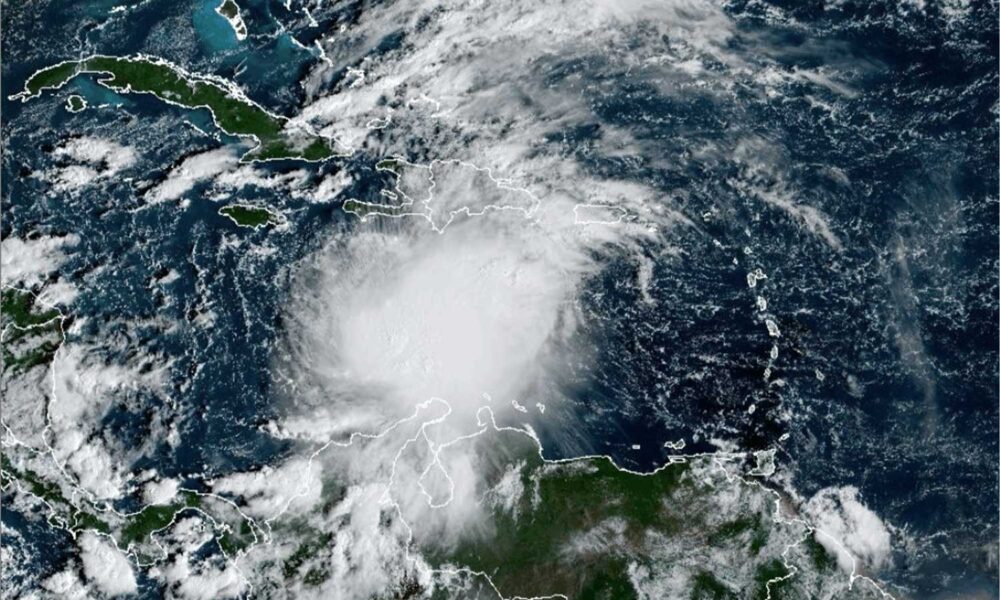It is mid-morning on October 21, 2025. Tropical Storm Melissa slowly moves west and becomes more organized. Models have not yet converged on its path, but the latest trends have it drifting toward Jamaica, and there is general agreement that 6 to 12 inches of rain could fall on the Dominican Republic and parts of Haiti by Friday with potentially more into the weekend. These three Caribbean nations, together with Cuba, and to a lesser extent Puerto Rico, are at risk of high precipitation and flooding. And the storm clearly has the fingerprint of climate change, according to Climate Central.

The US has a large role in the emissions that create climate change, and the country has a responsibility to protect those most impacted, including in places such as the Caribbean that are facing climate and humanitarian crises.
Haiti, the first free Black republic in the world, is today in a deep humanitarian crisis; it is the least ready and its population the most vulnerable among the Greater Antilles to face a powerful storm. The nation’s landscape is heavily deforested and extremely vulnerable to flooding and mudslides. It has not recovered from the devastating 2010 and 2021 earthquakes that caused extensive damage and claimed lives, let alone recovered from its long, extractive history of colonialism.
Today, Haiti is in the grips of violent conflict between powerful gangs and a weak government, with corruption on all sides. The United Nations’ International Organization for Migration estimates that this year alone more than 1.4 million Haitians were forced from their homes as they fled violence. Haiti may not face the full force of this storm, but in its current traumatized state, the country cannot easily absorb any new harm. Melissa is a slow-moving system, and likely to slow down even more, which increases the likelihood of heavy rain as the storm stays in place dropping lots of rain. The prospect for flooding and mudslides for Cuba, Jamaica, Haiti, Puerto Rico, and the Dominican Republic is high.
US should prepare for climate disaster, humanitarian assistance
Where is the US in all of this? US forces are in the Caribbean, alright. But they are not there to prepare for a humanitarian response to storm devastation. They are amassing troops, destroyers, cruisers, amphibious landing craft, drones, and stealth fighters in a saber-rattling exercise against Venezuela. Why? It is a fact that things in the South American country are difficult and complicated. But Latin Americans know full well that a US invasion to force change, or CIA covert operations, are not going to make things better.
In fact, as history has shown, they only serve to cause more misery and destabilize the region. And more importantly, adherence to the democratic rule of law compels us to recognize that leadership change should be up to the people of each country. It is certainly not up to the US government, much less to an administration that has turned the US hard towards autocratic rule in just a few months and is unlawfully killing people in the Caribbean Sea as enemy combatants. The abrupt retirement of the US Navy admiral overseeing Caribbean operations speaks volumes about how unpopular these strikes are, even among the military command.
And maddeningly for anyone, and certainly for this native Puerto Rican and caribeño, Puerto Rico is made to serve US warmongering by operating as a staging point for all these military assets—assets that could instead be marshaled for potential disaster response. Puerto Ricans are organizing to reject the use of our land, people, and assets to prepare for an attack on a sovereign Latin American nation.
US government gears up for war of aggression in the Caribbean
At a time when the US slides dangerously into authoritarianism, people in the US must reject the use of the vast resources of the country—which we pay for with our tax dollars—to threaten or carry out military assaults on sovereign nations, and instead demand their use for the life-saving work of humanitarian aid in the wake of a disaster.
In 2010 and 2021, when earthquakes struck Haiti, the US military supported USAID disaster relief efforts. Those interventions were not perfect or sufficient, but they were humanitarian. Since taking office just 10 months ago, President Trump enabled non-elected representatives to illegally “put USAID through the wood chipper,” essentially decimating the nation’s foreign aid capabilities. And the Trump administration has largely fabricated reasons for all-out war with our hemispheric neighbor, Venezuela. As a storm gathers strength in the Caribbean, the US’ militaristic positioning and priorities in Latin America could hardly be worse for the vulnerable people in that storm’s path.

Because of its role in creating climate change, the US has a historical responsibility to protect people from climate disasters, a responsibility that extends to people outside of the country. Those impacts are not just in the continental US, but in the US Caribbean as well. Those resources need to be deployed to make a healthier and safer world, not one with more violent conflict.

